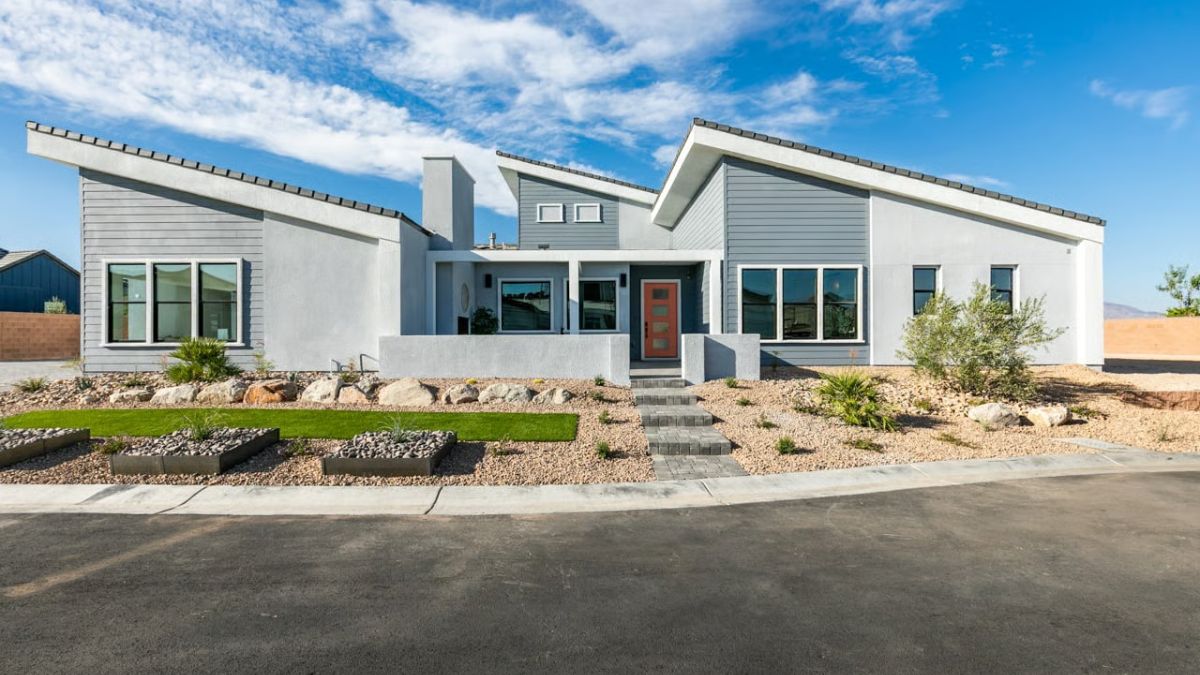REAL ESTATE
Top Tips for Scoring the Best Real Estate Deals in Australia

Australia’s property market is renowned for its diverse opportunities, ranging from vibrant urban dwellings to serene rural retreats. Navigating this market is both exciting and challenging. So, what strategies can give you an edge in securing the best opportunities? How can you ensure you’re making a sound investment?
Learning the intricacies of the market and adopting the right tactics can help you secure a favourable deal. Being well-prepared and familiar with the market is crucial when finding the best real estate deals in Australia. Whether you’re a first-time customer or a seasoned investor, these tips can help you make informed decisions and save thousands of dollars.
Research the Market Thoroughly
Before entering any transaction, it’s essential to understand the current market conditions. This includes understanding the average prices in different regions, the types of properties available, and the market trends. Consider subscribing to local property reports and attending open houses to learn what is available. This groundwork will give you a clear picture of what to expect and help you spot a good opportunity.
Timing Is Everything
The timing of your purchase significantly impacts the cost. Certain times of the year offer better conditions for buyers, such as periods when there is less competition. Additionally, market cycles can influence prices, with some phases presenting more favourable opportunities. Staying informed about these cycles and understanding when sellers are more motivated can give you a considerable advantage.
Get Pre-Approved for Financing
One of the best ways to position yourself as a serious buyer is to secure financing before you start your search. Pre-approval clarifies your budget and shows sellers that you’re ready to proceed with a purchase. This can make your offer more attractive, especially in a competitive market where merchants may receive multiple offers.
Be Ready to Negotiate
Negotiation is a key aspect of securing the best deal. This involves more than just haggling over the price. It includes negotiating the contract terms, settlement dates, and any inclusions in the sale. Flexibility and understanding the seller’s motivations can help you negotiate more effectively. However, it’s important to know when to stand firm and when to compromise to ensure you’re getting value for your money.
Look Beyond Popular Areas
While focusing on well-known areas is tempting, considering lesser-known suburbs or emerging regions can lead to better opportunities. These areas often have lower prices and growth potential, making them attractive for buyers looking for long-term value. Researching infrastructure developments and future urban planning can also provide insights into which areas might see an increase in demand.
Work with a Knowledgeable Agent
A well-connected and experienced agent can be an invaluable resource. They can provide access to off-market opportunities, advise on local trends, and help you navigate the purchasing process. Look for agents who specialise in the areas you’re interested in and have a track record of thriving transactions. A good agent will also have negotiation skills to help secure a favourable outcome.
Stay Informed About Government Incentives
Australia offers various government incentives to encourage property purchases, particularly for first-time buyers. These incentives can include grants, stamp duty concessions, and tax benefits. Staying informed about the latest programs can significantly reduce costs and make a potential purchase more affordable. It’s worth checking with your local government or a financial advisor to see what incentives might be available.
Securing the best real estate deals in Australia requires research, strategic planning, and expert advice. By understanding the market, being prepared to negotiate, and staying informed about opportunities, you can position yourself to make a sound investment. Whether buying your first home or adding to your portfolio, these tips can help you confidently navigate the process.

REAL ESTATE
The Art of Finding Your Dream Home

Introduction: The Quest for the Perfect Home
The journey to finding your dream home is akin to an adventure, brimming with hope, excitement, and the occasional challenge. It’s not uncommon for first-time buyers to feel overwhelmed by the sheer volume of choices available. Take heart, though, because platforms showcasing Wellington FL Homes for Sale offer a fantastic starting point. By focusing on your personal needs and expectations, you can filter through countless listings to zero in on the features that suit you best. Such a strategy not only makes the daunting process manageable but also helps you develop a clearer understanding of what your ideal home looks like.
Wellington, FL, offers a diverse selection of homes for sale, ranging from elegant equestrian estates to contemporary family residences, all set within a vibrant and upscale community. The area is especially appealing to buyers due to its top-rated schools, beautifully maintained parks, and close proximity to world-renowned polo and equestrian events. Whether you’re looking for a secure gated community or a spacious property with acreage, Wellington’s real estate market provides options to suit a variety of lifestyles and budgets.
Setting Priorities: What to Consider First
Before you dive headfirst into house hunting, it’s crucial to establish a set of priorities. Begin by reflecting on the elements that matter most to you, such as the proximity to family, quality of schools, the vibrancy of the neighborhood, or commuting distance to work. Creating a list of non-negotiables versus nice-to-haves allows you to streamline your search and focus on properties that fulfill your top priorities. For instance, homes close to high-performing schools are often in higher demand and may offer better long-term value. Additionally, consider what lifestyle needs you prioritize, whether that’s a bustling community, access to natural landscapes, or convenience to city amenities.
How to Navigate the Home-Buying Process
The home-buying process can be a complex labyrinth of paperwork, negotiations, and sometimes setbacks. Yet, understanding and preparing for each step makes it far less intimidating. Start by getting pre-approved for a mortgage, which not only clarifies your financial boundaries but also enhances your credibility as a buyer. This pre-approval can streamline your search and minimize the chance of financial surprises during closing. Moreover, familiarizing yourself with the local real estate dynamics aids in setting realistic expectations. Remember, patience is key. While it’s exciting to leap towards ownership, taking time to explore different properties often leads to better long-term satisfaction.
The Role of a Real Estate Agent
In the intricate world of real estate, a seasoned agent can act as both your guide and advocate. Their expertise in market conditions and influencing factors like housing market trends provides invaluable support, especially for first-time buyers. A reliable agent facilitates smoother negotiations and can steer you away from potential pitfalls associated with overpricing or future market depreciation. By having the backing of industry insights, your agent empowers you to make informed choices, ensuring your investment is sound both financially and personally. Their role extends beyond mere transactions, often bridging the gap between theoretical market knowledge and real-world application.
Market Trends and What They Mean for Buyers
Understanding current market trends is essential for any prospective homebuyer. These patterns influence when the best times to buy may be, and even the types of homes that will offer good returns on investment. For example, watching inflation rates or housing inventory fluctuations can indicate whether the market is swinging towards buyers or sellers. Analyzing this data helps anticipate price changes, allowing buyers to strategically time their purchases. Keep informed through reliable sources of real estate news and market analysis; doing so can differentiate between a prudent purchase and a perilous one.
Balancing Needs vs. Wants
When searching for a new home, the distinction between needs and desires can often blur. It’s easy to fall in love with grand outdoor spaces or advanced smart home features, but reevaluating their true necessity can be beneficial. Reflecting on how each feature aligns with your everyday life might reveal what’s essential versus what’s expendable. This approach ensures financial resources are allocated to elements that truly enhance your living experience. Finding this balance often leads to higher satisfaction and less buyer’s remorse, keeping future modifications and renovations in line with your initial budget.
The Impact of Location on Home Value
The old mantra in real estate, “location, location, location,” holds tremendous truth. The geographic setting significantly impacts not only the current value of your home but also its potential appreciation over time. Properties located in neighborhoods with robust infrastructure, excellent school districts, and vibrant community life tend to hold their value remarkably well. Moreover, proximity to public transport and main thoroughfares can further enhance property appeal. When exploring options, consider the broader community and regional growth projections, as these could turn today’s investment into a noteworthy gain over the coming years.
Final Thoughts: Making Your Dream Home a Reality
The pursuit of a dream home is as much an emotional journey as it is a financial venture. With the right preparation, diligent research, and strategic compromises, you pave a seamless path to achieving homeownership. Real estate experts frequently remind buyers that patience, alongside informed decisions, is key to satisfaction. The ideal home embodies more than architectural beauty or modern amenities; it provides a fulfilling and secure future. As you embark on this exciting journey, focus on creating a space that enriches your life, nurtures your aspirations, and becomes a cherished haven for years to come.
REAL ESTATE
The Legal Lifeline: How Real Estate Lawyers Help You Stay Grounded During Property Deals

Buying or selling a home is more than just a financial transaction; it’s often an emotional journey filled with anticipation, anxiety, and big decisions. Whether you’re a first-time buyer or an experienced seller, the process can feel like an emotional rollercoaster. From navigating bidding wars and tight deadlines to decoding contracts and facing last-minute changes, it’s easy to get overwhelmed.
In these pivotal moments, a real estate lawyer serves as your legal lifeline, offering calm, clarity, and confidence. Their expertise doesn’t just protect your legal interests; it also keeps you grounded when the stakes feel sky-high.
The Emotional Landscape of Real Estate Deals
Real estate transactions are rarely just about the property. They’re often intertwined with life transitions marriage, divorce, growing families, downsizing, or relocating for a new job. These changes come with a surge of emotions that can cloud judgment and make every step feel more intense.
Buyers may feel pressured to act quickly on a dream home, ignoring red flags in their rush to close the deal. Sellers may struggle to let go of a family home, becoming overly defensive in negotiations. Even seasoned investors can experience stress over legal risks and tight closing deadlines.
When emotions run high, mistakes are easier to make. That’s why having a professional who offers both legal clarity and emotional steadiness is invaluable.
The Grounding Role of a Real Estate Lawyer
A good real estate lawyer doesn’t just deal with paperwork; they bring a calming, problem-solving presence that balances emotion with logic. Here’s how they keep clients grounded:
A. Legal Translator
Real estate documents are often filled with dense legal language that can intimidate even savvy clients. A real estate lawyer breaks down contracts, agreements, and disclosures into terms you can understand. They ensure you know exactly what you’re signing, reducing the stress of the unknown.
B. Risk Assessor
Property deals carry hidden legal risks unclear title history, zoning restrictions, financing contingencies, and more. Your lawyer identifies potential pitfalls early and advises on how to avoid or mitigate them. When you’re emotionally invested, it’s easy to miss these details. A lawyer provides a rational lens when you’re too close to the situation.
C. Negotiation Buffer
Tense conversations can derail deals. Whether it’s an unexpected repair request or a delay in financing, real estate lawyers act as a professional buffer. They communicate on your behalf, handle conflicts tactfully, and keep the tone constructive.
With a strong focus on efficiency, courtesy, and affordability, Neil Sullivan Lawyer and his dedicated staff expertly handle all your real estate conveyancing needs, ensuring you stay protected and informed throughout the process.
Providing Clarity During High-Stakes Decisions
Real estate transactions often require quick, high-impact decisions. Should you accept a lower offer with no conditions? What should you do if a buyer requests costly repairs? What happens if your financing is delayed?
When you’re emotionally invested, it’s hard to think clearly. A real estate lawyer presents your options objectively, laying out the legal consequences, best-case outcomes, and potential risks. This kind of clarity helps you make informed, confident decisions without letting emotions take the wheel.
Legal Protections That Ease Anxiety
One of the biggest sources of stress in any property deal is fear of the unknown, surprise fees, last-minute issues, or deals falling through. Real estate lawyers reduce this anxiety by putting strong legal protections in place from the start:
- Conducting thorough title searches to ensure the property is legally transferable
- Drafting and reviewing contracts to reflect your interests and protect your rights
- Ensuring all legal conditions, deadlines, and disclosures are properly handled
- Managing the transfer of funds and ownership on closing day
By covering all the legal bases, your lawyer creates a safety net that lets you breathe easier and focus on the excitement of your next chapter.
The Human Side of Legal Support
While their role is rooted in law, the best real estate lawyers also bring compassion and understanding. They’ve worked with clients in every kind of emotional state, excited first-time buyers, grieving family members selling an estate, divorcing couples dividing property. They know how to listen, reassure, and provide stability.
Beyond legal advice, they offer emotional intelligence and support. This human element builds trust and makes clients feel truly cared for, not just represented.
Conclusion
Buying or selling property is never just a transaction; it’s a personal milestone packed with emotion, complexity, and life-changing decisions. In the middle of all this, a real estate lawyer is your steadying force. They clarify the legal maze, protect your interests, and offer a calm perspective when you need it most.
Whether you’re stepping into your first home or saying goodbye to one filled with memories, a real estate lawyer ensures you don’t face the journey alone. They are your legal lifeline, helping you stay grounded, informed, and empowered every step of the way.
REAL ESTATE
Your Path to Home Ownership: Embracing Joy and Comfort

For many, buying a home transcends mere transaction—an emotional journey. Whether searching for idyllic family homes or sleek urban condos, finding the correct Santa Cruz CA real estate agent Daniel Oster, can make the process smoother and more enriching. An experienced agent is integnly in identifying a perfect location and shaping an environment filled with personal joy and warmth. Steering through the intricacies of the real estate market with seasoned professionals ensures that buyers remain focused on what might truly define their happiness: a place they can call home.
Understanding what transforms a house into a home is crucial. It’s about identifying emotional touches, creating personal comfort, and building a space that naturally aligns with one’s lifestyle. Navigating potential properties might sometimes feel overwhelming, but maintaining clarity on essential desires and practical needs can mitigate challenges. This informed approach fortifies a sound investment and leads to a satisfying living experience rich in personal fulfillment and comfort.
The Emotional Side of Home Buying
Stepping into a potential home often evokes a cascade of emotions. On entering, one naturally begins imagining life within those walls, measuring spaces against personal dreams. Emotional connection with a property frequently affects choices, sometimes even outweighing practical elements like budget constraints or geographical location. According to psychological experts, aligning an emotional gut feeling with a rational checklist forms a balanced decision-making process, which is critical in finding a dwelling that offers comfort and joy. Such consciousness ensures that the residence is physically accommodating and emotionally enriching, nurturing a sense of well-being and belonging that resonates throughout the years.
Designing Your Dream Space
Your house isn’t just a shelter; it manifests your taste and dreams. Designing a space embodies more than solely selecting materials or color palettes—it’s crafting an atmosphere that genuinely feels “like you.” A curated blend of traditional and contemporary elements can forge a timeless ambiance within your home. Personal touches, whether through artwork, furnishings, or color coordination, narrate an overarching personal narrative—a story intricately woven within the fabric of your living space.
Current Housing Market Trends
Remaining informed about market movements significantly impacts collective home-buying decisions, allowing informed shopping. New trends overwhelmingly favor houses with eco-friendly materials and layouts sympathetic to remote work flexibility. The enduring legacy of recent global shifts has resulted in such choices, as they more than ever reflect the evolving nature of contemporary lifestyles. The escalating appeal of smart home technology stands as another pivotal trend, mirroring consumers’ growing appetite for streamlined convenience and enhanced year-round security.
Making Your Home Functional and Stylish
Functionality doesn’t necessarily need to compromise aesthetically pleasing décor trends that astutely employ multipurpose furniture and judicious storage solutions, which harmonize seamlessly with style. Balancing elements such as lighting and texture remains essential; leveraged correctly, these facets create ambiance and enhance functionality. The balance between open space and cozy corners renders a home genuinely livable, intertwining elements that together foster a space adaptable for varied routines and leisure.
Financial Planning for Future Homeowners
Purchasing a home represents a significant financial undertaking. Prospective homeowners should begin by crafting a meticulous budget plan, best understood by assessing long-term economic goals alongside understanding various mortgage options available. A detailed examination of one’s financial health empowers sound decision-making and choice adaptability when unforeseen expenses arise. Consulting financial advisors can play a fundamental role in solidifying economic foundations, ensuring that home ownership transpires as a feasible reality, without burdening finances.
Balaburdenist with Reality
It’s an art to balance ambition with practicality. While dreams of lavish properties adorned with luxuries persist, real-world constraints often necessitate compromise. To evade unwarranted disappointments, assigning precedence to essential needs over flexible preferences offers a roadmap toward informed, logical selection. Keeping an open mind allows for discovery, often leading to properties that fit not only one’s finances but also evolving desires and unarticulated needs over time.
Personalizing Your Space for Comfort and Joy
Adding personal touches is fundamental in crafting joyous abodes. Whether through cherished heirlooms, family photographs, or unique trinkets from travels, these elements not only personalize a space but also personalize the space. The space resonates with personal history and transports daily experiences, assertively enriching the home with fervent comfort and making it a warmly inviting sanctuary tailored to envelop and nurture its inhabitants.
Sustainable Living: Eco-Friendly Home Choices
An increasingly significant design aspect centers on sustainable living practices. Implementing eco-friendly fixtures, such as efficient appliances, sustainable materials, or solar energy options, reflects a responsible attitude toward environmental preservation. Pursuing green solutions fosters peace of mind, benefiting not only the planet but also potentially substantial utility savings in turn. The U.S. Green Building Council emphasizes practical pathways for homeowners to integrate environmental stewardship into their lifestyle, preserving resources for future generations.
-

 TOPIC7 months ago
TOPIC7 months ago7 Expert Tips For Choosing The Best Basement Renovation Companies
-

 BUSINESS6 days ago
BUSINESS6 days agoTop 5 Features of Sowix Online That Every User Should Know About
-

 TOPIC1 week ago
TOPIC1 week agoWhy Greece Katz Martian Has Everyone Talking in 2025
-

 TOPIC3 weeks ago
TOPIC3 weeks agoTop Features of BetterThisWorld .com You Need to Know About
-

 FINANCE3 months ago
FINANCE3 months agoHow TraceLoans Can Simplify Your Finances
-

 BIOGRAPHY3 months ago
BIOGRAPHY3 months agoFrom Reality Star to Business Mogul: Prince Narula Digital PayPal
-

 EDUCATION2 weeks ago
EDUCATION2 weeks agoThe Evolution of Pi123: How It Became a Must-Have Tool
-

 TOPIC1 week ago
TOPIC1 week agoSabsastaa.com: Your Ultimate Guide to Budget Shopping and Savings